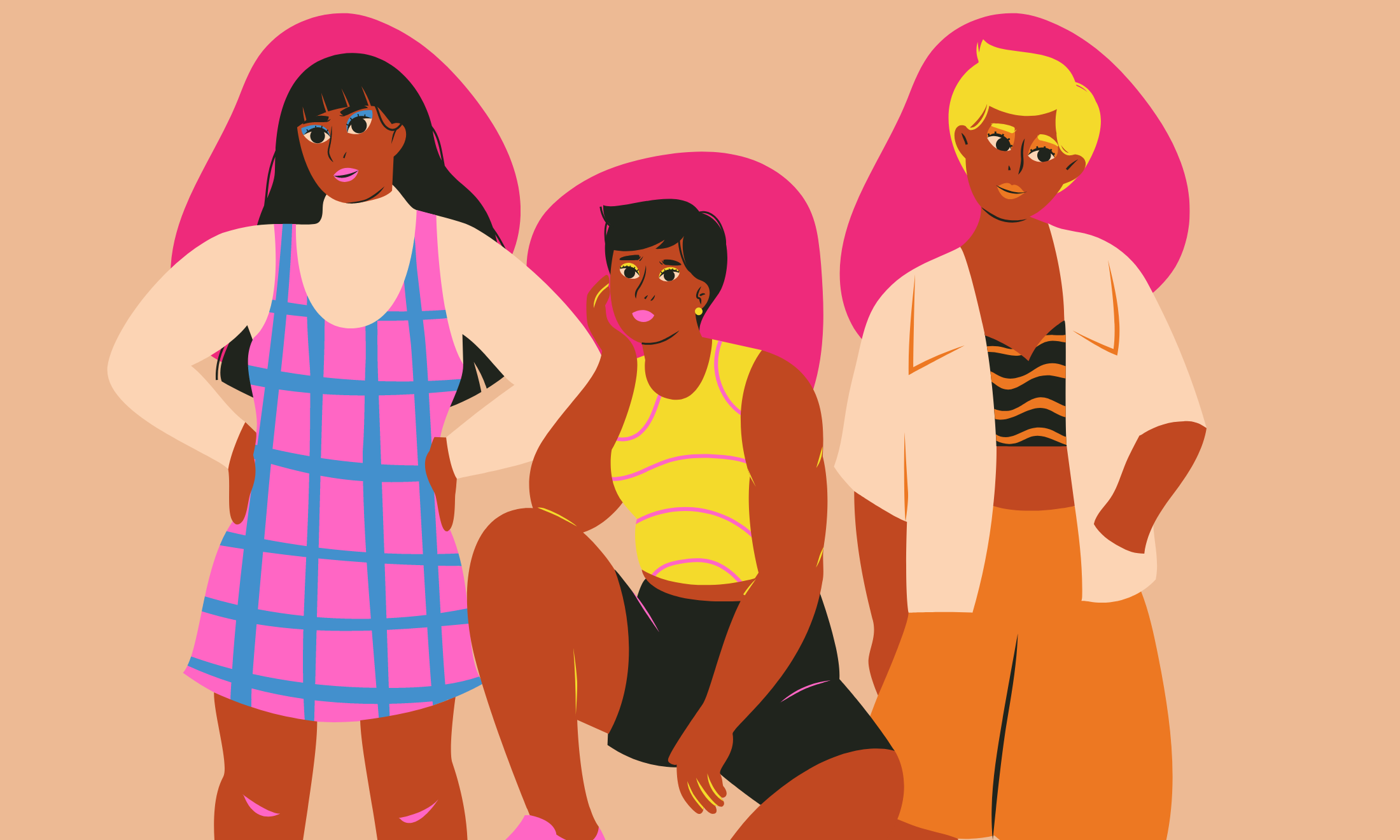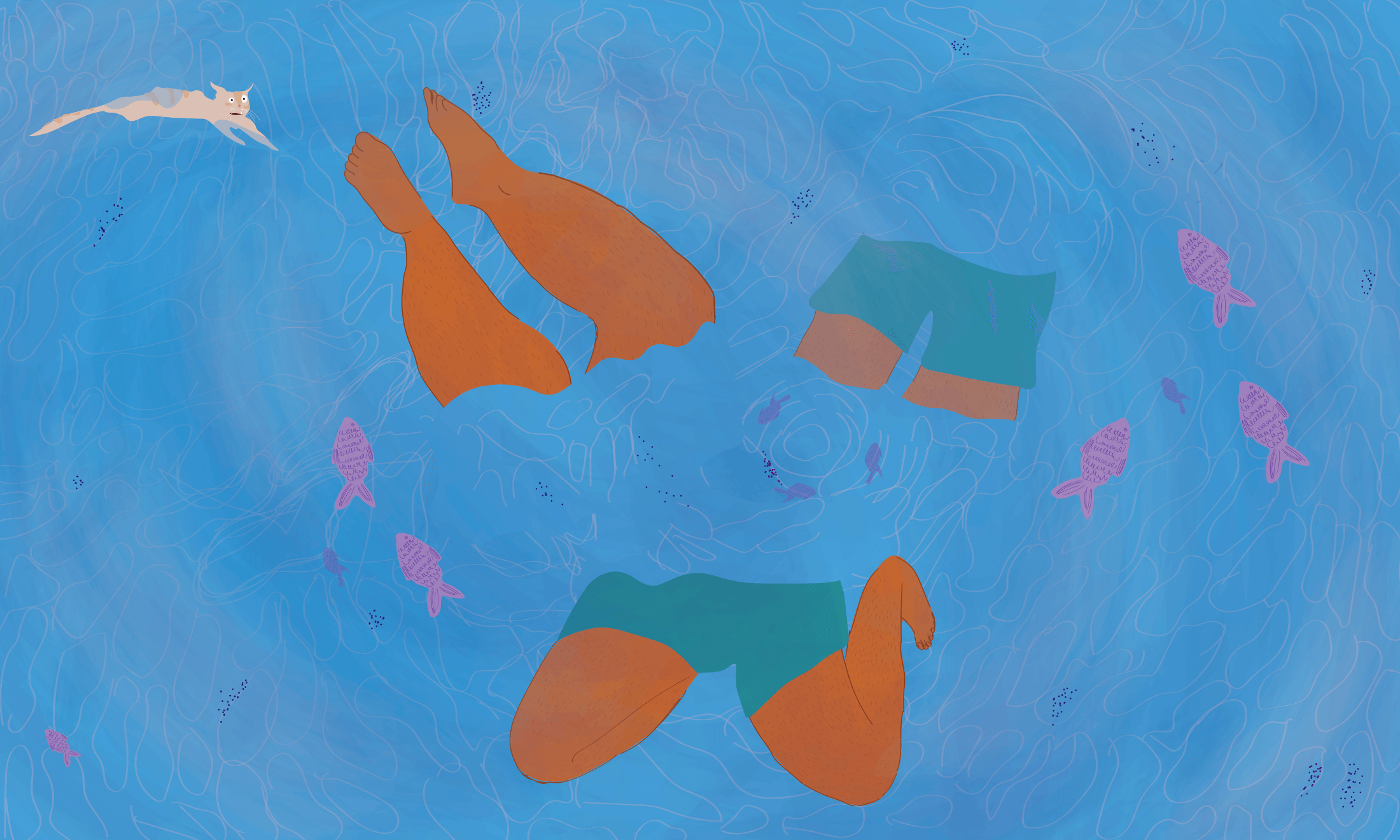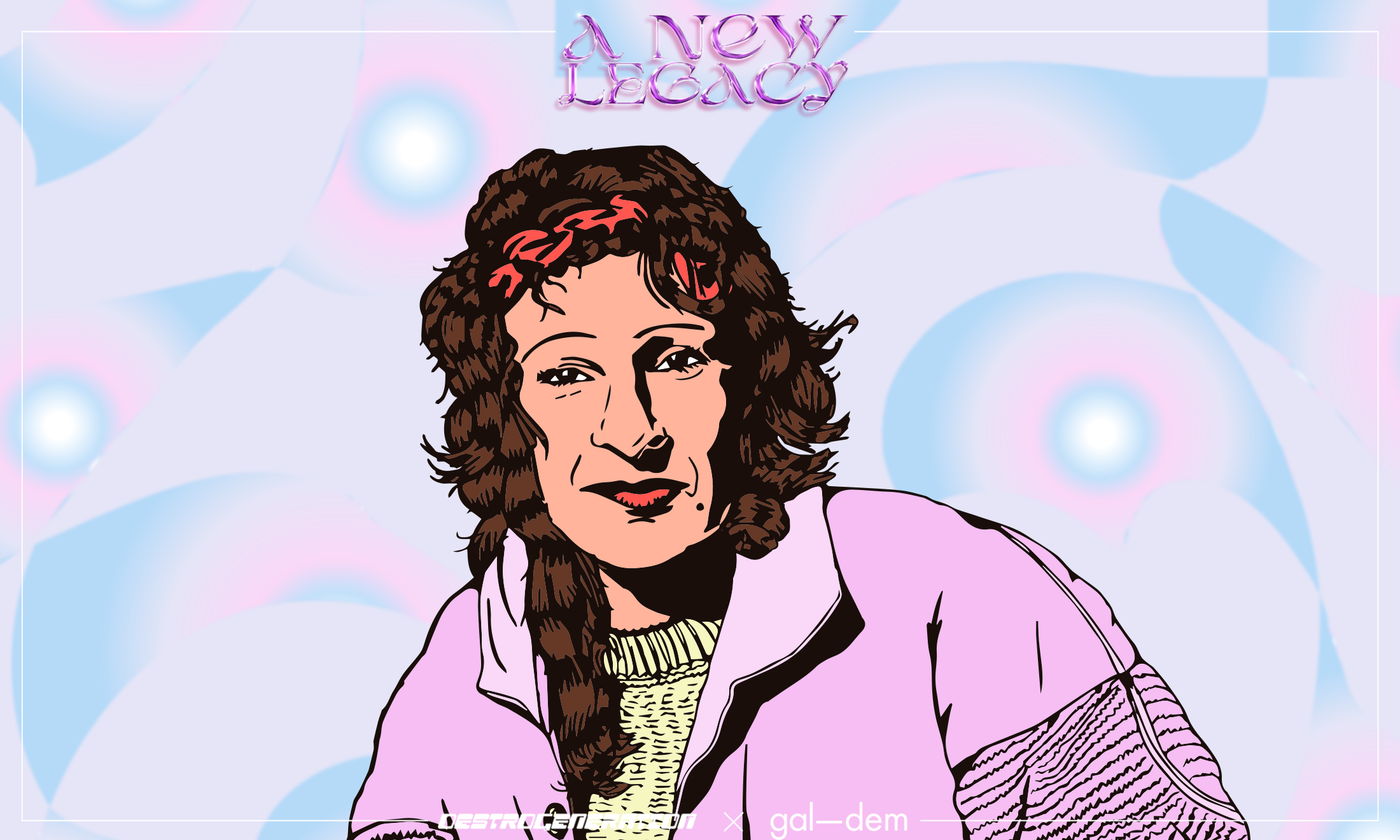
Canva
Trans inclusivity in sexual violence services is perfectly achievable – these organisations are leading by example
Despite a loud but virulent minority proclaiming otherwise, trans inclusion in sexual violence services is simple, say sector workers.
Jeevan Ravindran
17 Nov 2021
Content warning: mentions of transphobia
The last few years have seen a tidal wave of transphobia sweep the UK, vilifying and dehumanising trans people and in many cases, stripping away what little safety they had in the public sphere.
Among the most high-profile debates waged has been the question of whether trans people — particularly trans women and transfeminine people — should be allowed to access single-sex spaces for survivors of sexual violence.
In February, gal-dem published an investigation uncovering rampant transphobia in violence against women and girls (VAWG) services. Senior staff at one organisation were alleged to have told junior workers to only speak to helpline callers if they “sound like a woman,” and across the sector, whistleblowers outlined “cis-women only” culture that was being pushed from the top down.
Although the hypervisibility of the ‘gender critical’ movement would make it all too easy to believe that there are no longer any safe spaces for trans people in the VAWG sector, thankfully that’s not the case. Many sexual violence services have been quietly trans inclusive for years, or even since their inception. However, the recent rise of transphobia has required trans-inclusivity to be worn more openly, and services have been pushed to look for new ways of encouraging trans survivors to trust them despite the current climate.
“We realised that we needed to be more explicit,” says Jay Breslaw, CEO of the Brighton-based Survivors’ Network, a service supporting survivors of sexual violence across Sussex. Despite always being a trans-inclusive organisation, the charity’s research showed trans people were still hesitant to access services, as they weren’t sure if they would be welcomed. So in 2011, they began efforts to explicitly outline their commitment to supporting trans survivors of sexual violence.
“From that point onwards, we named our trans inclusivity more overtly and became known for welcoming trans women into our services,” Jay adds. With the increased visibility of transphobic narratives in the VAWG sector (which have been platformed by high-profile figures like J.K. Rowling), Breslaw says her organisation had to rethink the way it framed itself. “We describe ourselves as a feminist organisation, partly because we’re not only for women — we provide services to people of all genders, including cis men,” she says.
“But we also feel a bit uncomfortable with some of the narratives that are coming from ‘women’s organisations.’ And we actually want to — in a small way — demarcate ourselves from those organisations.”
Recently, Survivors’ Network has been thinking of ways to be more proactive in reaching trans survivors and, in doing so, set up a Zoom support group for trans and non-binary survivors in partnership with LGBTQ organisation Switchboard.
“Survivors’ Network talks about being trans inclusive, and it’s very vocal about that. So why don’t that many trans women come?”
For Switchboard project facilitator Ruairi White, coming into the Survivors’ Network framework offered them an opportunity to investigate what wasn’t working for trans people within the VAWG sector.
“Survivors’ Network talks about being trans inclusive, and it’s very vocal about that,” Ruairi says, talking through their initial thought process upon joining the project. “So why don’t that many trans women come?”
In the network’s newly formed trans and non-binary survivor’s group, discussions were held around what stops trans women from accessing services that were designed as single-sex or women’s only spaces. “What are the points at which you switch off?” Ruairi recalls asking the group. “Is it where you Control F ‘trans’ on the [service’s] website, and you do or do not find something? Is it when you’re worried about a reception point, or calling up and someone making a judgement based on your voice?”
Ruairi and Kitty Gardner, a co-facilitator from Survivors’ Network, published their findings in a report with insights from group members. One person said they were often read as male, despite not identifying as such, and so found it difficult to access support in “coded-female” spaces, while non-binary survivors said they did not fit into single-sex spaces. Others raised that traditional services often linked gender dysphoria to abuse and failed to view them separately, and that in non-trans specific spaces, they always had to provide several additional explanations.
Kitty believes it was very important for the trans survivors to meet the group facilitators beforehand, so they knew what to expect and felt they were entering a space where they would be safe. She and Ruairi consulted the group members on how they felt about her involvement as a cis woman in running a service for trans survivors, and the group approved.
“There’s a real misunderstanding of how these survivor services are delivered”
“For all survivors, that would make a difference, but I think it’s recognising that that’s an additional barrier, especially when you’re living in the kind of rampant transphobia in women’s services,” she says.
One person who is no stranger to this rampant transphobia is CEO of Edinburgh Rape Crisis Centre, Mridul Wadhwa. A trans woman of colour herself, Mridul brings her own experience to her work, and uses it to inform the way she thinks about trans survivors accessing the service.
“My protected characteristics intersect,” Wadhwa says. “And I often reflect on, what does that mean, for those of us who experience oppression because of a protected characteristic? I think one of the conclusions I’ve made, and hopefully I’m wrong — so far, I’m not, unfortunately for me — is that we expect to be treated badly.”
This expectation inevitably creates a barrier between the trans-inclusive services in the VAWG sector and trans survivors, and is something Wadhwa and her team continue to work to dismantle. Like Survivors’ Network, Edinburgh Rape Crisis Centre is very explicit about its commitment to the trans community and non-binary people — which features on both its social media pages and website.
“The other challenge is, of course, letting the trans community know that we are a safe place,” she says. “There’s a real fear about ‘is this a safe space for me? What will happen if I come?’ So that conversation is ongoing, that work within the community is ongoing.”
This also extends to cis survivors who have been harmed by the messages propagated by the gender critical movement. Mridul says her organisation actively tries to dispel these myths, which often obscure the way the services work and suggest that all survivors are placed together in “one big room”. “There’s a real misunderstanding of how these survivor services are delivered,” she says. “And who comes into contact with whom.”
For Survivors’ Network, it’s a question of commitment at an organisational level, and a refusal to tolerate transphobia in any form. “I feel like you need to have the buy-in on all levels,” Jay Breslaw says. “And we specifically ask questions around trans inclusivity, if we have new board members, because actually […] we know that there’s a sort of transphobia that sometimes isn’t immediately obvious.”
Mridul believes Edinburgh Rape Crisis Centre was the first VAWG service in Scotland to explicitly outline their trans inclusivity, and broadly speaking, services in the country are largely trans inclusive.
“To have trans women working in the movement is a big challenge that lies ahead — a lot of it depends on actual societal responses to trans people”
In 2018, a coalition of Scottish women’s organisations released a statement supporting the reform of the Gender Recognition Act. Furthermore, services need to be trans inclusive to qualify for funding from the Scottish government.
Despite this, Mridul says there are many challenges impeding full trans inclusivity in the Scottish VAWG sector, particularly as trans people still face many obstacles in society.
“To have trans women working in the movement is a big challenge that lies ahead — a lot of it depends on actual societal responses to trans people,” she says. “To be able to do this kind of work, you should have a space to heal from your trauma. That space is quite compromised at the moment.”
Although Survivors’ Network and Edinburgh Rape Crisis Centre are actively trying to work with trans women of colour, effort has not yet equalled attainment for either organisation. In running the group for trans survivors, Ruairi says they were conscious of the lack of people of colour involved at both the facilitator and client levels.
“I think pretty much the people who made the decisions about this group were white,” they say. “And I think that means that inevitably, we’re not going to be offering the right stuff.”
While Mridul’s visibility as a trans woman of colour leading the organisation is something she hopes will encourage more trans people of colour to access her service, it hasn’t yet done so. “In my seven years of working in the rape crisis movement, I have not yet met another trans woman of colour or heard of her either working or using our services,” she says. “So in the Scottish context, there actually is no other.”
“Organisations like Survivors’ Network and Edinburgh Rape Crisis Centre say trans inclusivity isn’t just achievable, but simple”
For Mridul, the question of trans inclusivity ultimately goes back to the very roots of exclusion — and the failure to build an intersectional VAWG sector lies with those who helped create it and maintain institutional power today.
“These services were set up by white women, and they mainly cater to white cis women,” she says. “So, our journey to inclusion has not just begun with inclusion of trans people. It’s about the inclusion of any other minority who has been historically, and even currently, been excluded from how our services are organised.”
While current gender critical narratives aim to push trans people out of single-sex spaces, portraying them as the “other” category on the fringes of society, organisations like Survivors’ Network and Edinburgh Rape Crisis Centre say trans inclusivity isn’t just achievable, but simple.
It’s true that there are still many obstacles, particularly when it comes to supporting trans people, and particularly trans people of colour, who are working in the movement. And funding remains an obstacle that prevents many services from running trans-specific support options.
However, many organisations across the UK are already taking simple practical steps — such as specifically referring to their support of the trans community on their websites, releasing statements of commitment, and asking important questions when hiring support workers and board members.
Above all, organisations are recognising the lack of safety for trans people in many spaces across the VAWG sector, and are actively trying to highlight the visibility of the places where trans people can go to heal. And in these services, there’s a real recognition that trans inclusivity isn’t optional, but rather part and parcel of the very backbone of supporting survivors of sexual violence.
“I think it’s really important for rape crisis centres to recognise that being trauma-informed, and being truly feminist at principle, is the same as being trans inclusive,” Kitty says. “It’s not like there’s this whole other world.”
Like what you’re reading? Our groundbreaking journalism relies on the crucial support of a community of gal-dem members. We would not be able to continue to hold truth to power in this industry without them, and you can support us from £5 per month – less than a weekly coffee.

Britain’s policing was built on racism. Abolition is unavoidable

How Pakistan’s Khwaja Sira and transgender communities are fearing and fighting for their futures

Their anti-rape performance went viral globally. Now what?






